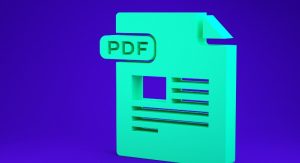An overdraft is a short-term borrowing method through your current account. You go into debt when you use your arranged or unarranged overdraft, as you are borrowing from the bank. The duration for repaying an overdraft depends on the terms and conditions set by the bank. Different current accounts have different overdraft interest and charges. In this article, let’s explore everything about overdraft payment and how long do you have to pay an overdraft back.
Arranged and Unarranged Overdrafts – How They Work
When it comes to managing your finances, it’s essential to understand how arranged and unarranged overdrafts work. These two types of overdrafts offer different methods for borrowing money from your bank. Let’s take a closer look at each one:
What is an Arranged Overdraft?
An arranged overdraft is a borrowing facility offered by the bank that allows you to spend more money than you have in your current account, up to an agreed limit. This means that if your balance falls below zero, you can still make payments and complete transactions without incurring charges for bounced payments.
You must agree on the overdraft limit and the terms with your bank before using an arranged overdraft. It’s important to note that the arrangement is subject to checks, and the bank may consider factors such as your credit history, income, and personal circumstances.
What is an Unarranged Overdraft?
An unarranged overdraft occurs when your account goes over the arranged limit or has a negative balance without an agreed overdraft facility. In this case, the bank has the right to decide whether to allow or stop a payment that would result in an unarranged overdraft.
The bank’s decision is based on your personal circumstances and may vary from one situation to another. It’s important to note that unarranged overdrafts usually come with higher charges and interest rates compared to arranged overdrafts. Therefore, it’s advisable to avoid relying on unarranged overdrafts as they can be more expensive.
| Features | Arranged Overdrafts | Unarranged Overdrafts |
|---|---|---|
| Agreed Limit | Yes | No |
| Prior Approval Required | Yes | No |
| Charges & Interest Rates | Lower | Higher |
| Bank Decision | N/A | Yes |
As illustrated in the table above, arranged overdrafts offer the advantage of an agreed limit and typically lower charges and interest rates. On the other hand, unarranged overdrafts lack these benefits and are subject to the bank’s discretion.
When using an overdraft, regardless of whether it’s arranged or unarranged, it’s important to be aware of the terms and conditions set by your bank. Understanding the overdraft payment deadline, the repaying period, and the time frame for overdraft repayment will help you manage your finances effectively and avoid any unexpected charges.
Remember, an overdraft is a financial tool that should be used responsibly and as a short-term solution. If you find yourself frequently relying on overdrafts to cover your daily expenses, it may be worth considering other financial options such as loans or credit cards with more favorable terms.
Advantages and Disadvantages of Using an Overdraft
Using an overdraft can provide you with some advantages when managing your finances. One of the benefits is the flexibility it offers, allowing you to borrow only the amount you need at a given time. Whether you require funds to cover unexpected expenses or manage temporary cash flow issues, an overdraft can be a convenient solution.
Another advantage is the quick arrangement process. Compared to other forms of borrowing, such as personal loans, applying for an overdraft is often faster and less complex. It is a readily available option if you have an existing current account with the bank.
Furthermore, using an overdraft typically does not incur early repayment charges. This means that you have the freedom to settle your debt sooner if you are in a position to do so, without incurring any additional fees.
However, it is important to consider the disadvantages associated with utilizing an overdraft. One significant drawback is the high interest charges that come with overdraft usage. These charges can add up over time, especially if you carry a large overdraft balance or have an indefinite repayment period.
Moreover, an overdraft usually comes with a limited borrowing amount compared to personal loans or credit cards. Depending on your financial needs, the amount you can borrow through an overdraft may not be sufficient.
Another disadvantage to be aware of is the risk of overspending. An overdraft can make it easy to dip into negative balances, which may lead to accumulating more debt and financial difficulties in the long run. It is crucial to use an overdraft responsibly and be mindful of your spending habits.
Additionally, it’s important to bear in mind that the bank has the right to ask for repayment at any time. Unlike fixed-term loans, an overdraft does not have a specific end date. This flexibility for the bank means that you need to be prepared for the possibility of repaying your overdraft sooner than anticipated.
Considering the advantages and disadvantages of using an overdraft, it is wise to explore other borrowing alternatives before committing to an overdraft. Personal loans or credit cards may provide cheaper options depending on your personal circumstances. Comparing the interest rates and borrowing terms of different products can help you make an informed decision when it comes to managing your finances.
Expert Tip:
If you find yourself struggling with an overdraft and want to get out of it, consider creating a repayment plan. Start by paying off the highest interest overdraft first, and gradually work towards reducing your overall debt. It can also be helpful to consult with a financial advisor to guide you through the process and provide personalized advice based on your situation.

Overall, while an overdraft can be a convenient financial tool, it is crucial to carefully weigh the advantages and disadvantages, considering your personal circumstances and financial goals.
Managing Your Overdraft and Repayment Options
If you have a current account with the bank, you can apply for an overdraft by logging on to Online Banking or visiting your local branch. Existing customers can also increase or decrease their overdraft limit through Online Banking. Credit checks are conducted when applying for an overdraft or an extension.
It’s recommended to use online and mobile banking to regularly check your account balance, set up account alerts for overdraft usage, and access budget planners. By keeping track of your finances, you can stay on top of your overdraft repayment period and ensure timely payments.
Furthermore, the bank provides free text alerts for overdraft usage, allowing you to monitor your spending and avoid charges. These alerts can serve as reminders to settle your overdraft within a suitable timeframe, avoiding unnecessary interest fees.
Benefits of Online and Mobile Banking
Online and mobile banking platforms offer convenient tools to manage your overdraft repayment effectively:
- Monitor your account balance regularly
- Set up alerts for overdraft usage
- Access budget planners and financial management tools
By taking advantage of these services, you can stay on top of your financial obligations and mitigate the risk of accruing additional charges on your overdraft. Keeping a close eye on your account transactions and spending habits can help you settle your overdraft within the desired duration, minimizing the potential impact on your finances.
It’s crucial to remember that there is no specific end date for an overdraft, and the bank can ask for repayment at any time. By proactively managing your overdraft and utilizing the available banking tools, you can ensure you stay on track with your repayments and maintain a healthy financial position.
Interest Rates and Charges
When using an overdraft, it’s important to be aware of the applicable interest rates and charges. The bank will provide you with detailed information regarding the costs associated with your overdraft facility.
Understanding the overdraft payment timeframe and the associated fees can help you plan your finances accordingly. By factoring in the duration to settle an overdraft and the additional charges, you can make informed decisions about your borrowing and repayment options.
Take advantage of the resources available to you, such as the bank’s customer service representatives, to clarify any concerns or seek further explanation on the overdraft payment timeframe and associated costs.
How Long Do You Have to Pay an Overdraft Back?
In the UK, there is no set timeframe for repaying an overdraft. However, it’s important to note that an overdraft is a debt that you owe to your bank, and they can ask for repayment at any time.
If you exceed your agreed overdraft limit or have an unarranged overdraft, your bank may charge you fees and interest on the amount owed. It’s advisable to repay the overdraft as soon as possible to avoid accruing additional charges.
If you’re struggling to repay your overdraft, it’s best to contact your bank as soon as possible to discuss your options, such as setting up a repayment plan or consolidating your debts. It’s always better to address the situation proactively rather than letting it escalate.
Relevant Overdraft Repayment Information

| Bank Name | Overdraft Repayment Period | Duration to Settle an Overdraft | Overdraft Payment Timeframe |
|---|---|---|---|
| NatWest | 30 days | Flexible, based on customer agreement | Immediate repayment upon request |
| Barclays | 35 days | Agreed duration based on individual circumstances | Can be requested at any time |
| Lloyds Bank | 45 days | Flexible repayment terms | Bank can request repayment at any time |
These details provide an overview of the overdraft repayment periods, durations to settle an overdraft, and the payment timeframes for some popular banks. It’s important to note that each bank has its own specific terms and conditions, so it’s advisable to consult with your bank directly for the most accurate and up-to-date information.
Conclusion
Managing an overdraft requires careful consideration of the terms and conditions set by the bank. Understanding the advantages and disadvantages of using an overdraft is crucial to making informed financial decisions. It’s also important to explore other borrowing options to find the most cost-effective solution for your needs.
Utilizing tools provided by the bank, such as online banking and budget planners, can help you manage your overdraft more effectively. Regularly checking your account balance and setting up account alerts for overdraft usage can help you stay on top of your finances.
To avoid high interest charges and financial difficulties in the long term, it’s essential to prioritize debt repayment and develop a repayment plan. Planning your finances effectively and making timely payments will ensure you stay within the overdraft payment timeframe and pay back your overdraft within the agreed time frame.
FAQ
What is the difference between an arranged and unarranged overdraft?
An arranged overdraft is when you have pre-agreed with your bank on a limit for borrowing when your account balance falls below zero. An unarranged overdraft occurs when your account goes over the arranged limit or has a negative balance without an arranged overdraft. The bank has the right to allow or stop payments that would result in an unarranged overdraft based on your personal circumstances.
What are the advantages and disadvantages of using an overdraft?
Some advantages of using an overdraft include flexibility in borrowing only what you need at the time, quick arrangement, and no early repayment charges. However, there are also disadvantages such as high interest charges, limited borrowing amount compared to personal loans, overspending risk, and the bank’s right to ask for repayment at any time. It’s important to explore other borrowing options to see if they may provide cheaper alternatives based on your personal circumstances.
How can I manage my overdraft and repayment options?
To manage your overdraft, it’s important to carefully consider the terms and conditions set by your bank, understand the advantages and disadvantages, and explore other borrowing options. Utilize tools provided by the bank such as online banking and budget planners to regularly check your account balance, set up account alerts for overdraft usage, and plan your finances effectively. Prioritizing debt repayment can help avoid high interest charges and financial difficulties in the long term.
Can the bank ask for repayment of my overdraft at any time?
Yes, there is no specific end date for an overdraft, and the bank can ask for repayment at any time. It’s important to be aware of the interest rates and charges associated with using an overdraft and to plan your finances effectively to ensure timely repayment.




